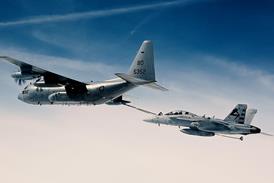Federal Express has accepted the need to equip its fleet of jet-powered freighters with the traffic-alert and collision-avoidance system (TCAS 2) to meet pending international regulations, but is still backing the US Cargo Airlines Association (CAA) effort to develop an automatic dependent surveillance - broadcast (ADS-B)-based system.
The airline, along with other US cargo carriers, supported the CAA in resisting pressure to install the TCAS, preferring to develop a collision-avoidance system based on ADS-B, but it has been forced to relent by pending international regulations. Europe and India are to make mandatory installation of the airborne collision-avoidance system (ACAS) before ADS-B is available to meet the requirement. UPS, which is championing the development of an ADS-B-based system, admits that it may also be forced to install the TCAS in its international fleet.
FedEx's TCAS 2 systems will be to the latest "Change 7" standard, which avionics manufacturers are working to implement by the third quarter of the year. Primarily a software upgrade, Change 7 is required to meet the international ACAS specification and also provides a growth path to ADS-B. The schedule calls for 95% of FedEx's 334-aircraft jet fleet to be equipped with the TCAS 2 within four years.
The CAA has embarked on a programme to equip the US cargo-aircraft fleet with ADS-B within four years, arguing that it will improve the range, accuracy and reliability of air-to-air surveillance. The US Federal Aviation Administration has agreed to co-operate with a CAA demonstration planned for later this year to evaluate candidate datalinks on Airborne Express, FedEx and UPS aircraft.
Because international standards for ADS-B are still being drawn up, the CAA is planning a phased development. Phase I will provide a cockpit display of traffic information, using ADS-B position reports, and the ground-based traffic-information system being fielded by the FAA.
Phase II will add conflict detection and alerting, and Phase III will provide collision avoidance, including resolution advisories. The CAA is aiming to have an ADS-B-based collision-avoidance system operationally certificated by the end of 2001.
FedEx also aims to fit its fleet with an enhanced ground-proximity warning system within three years.
Source: Flight International























